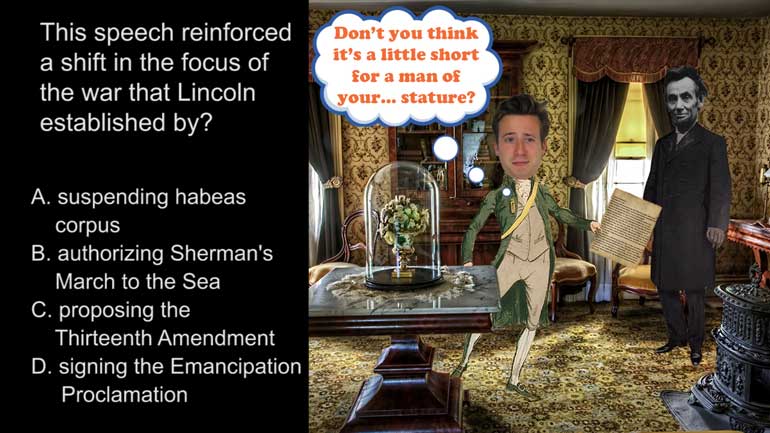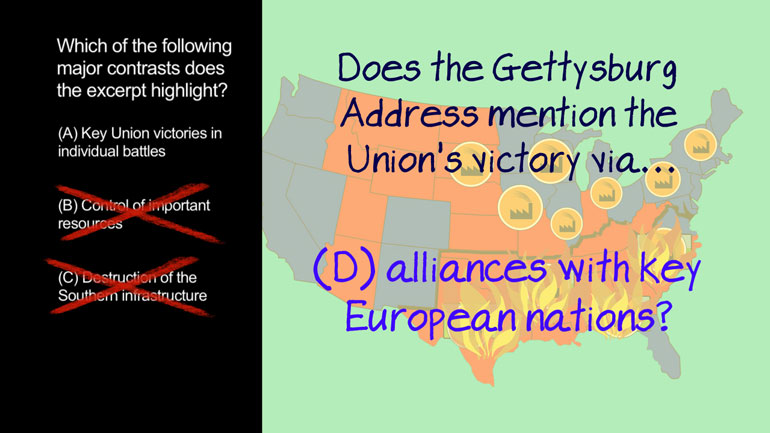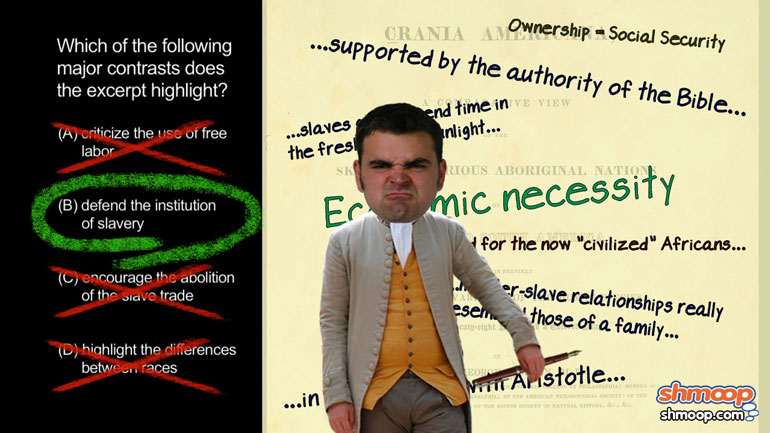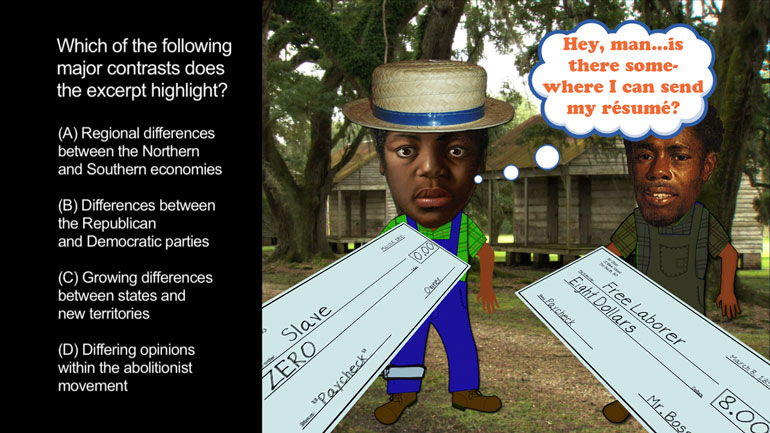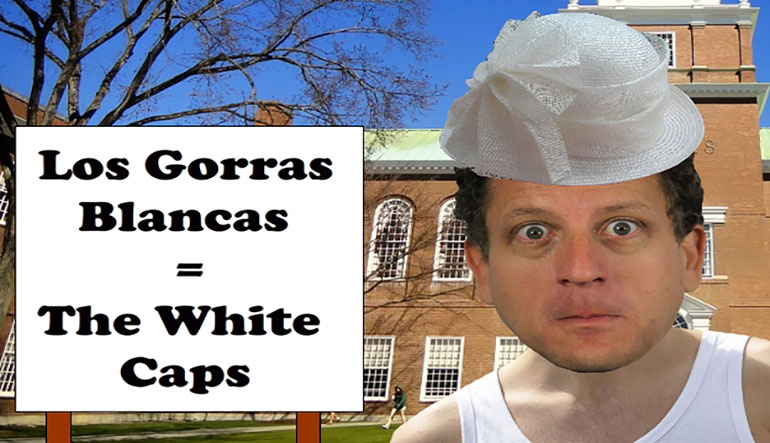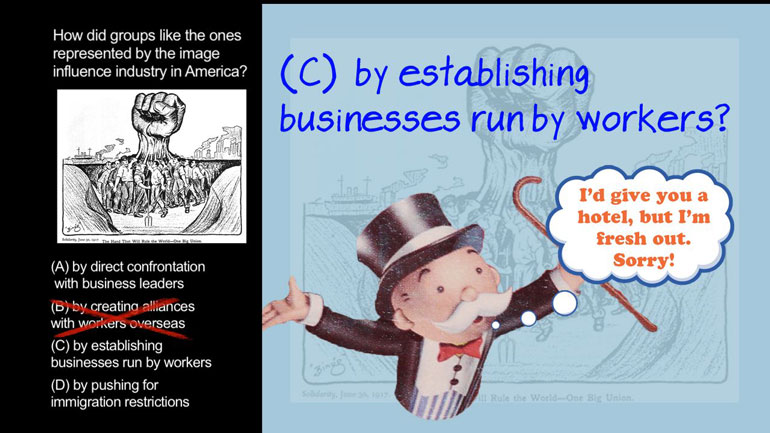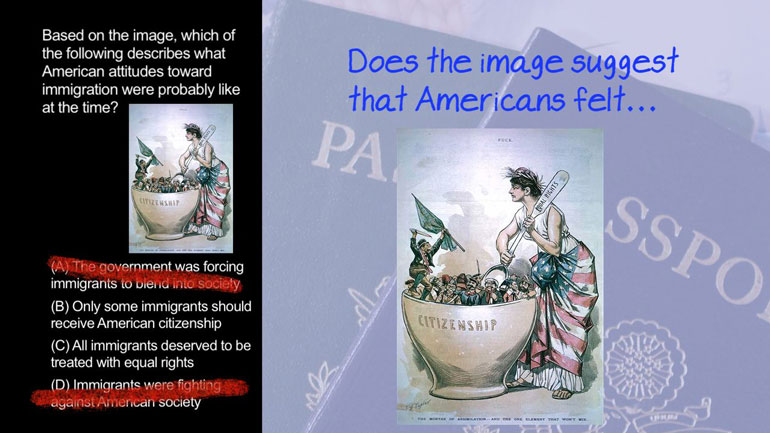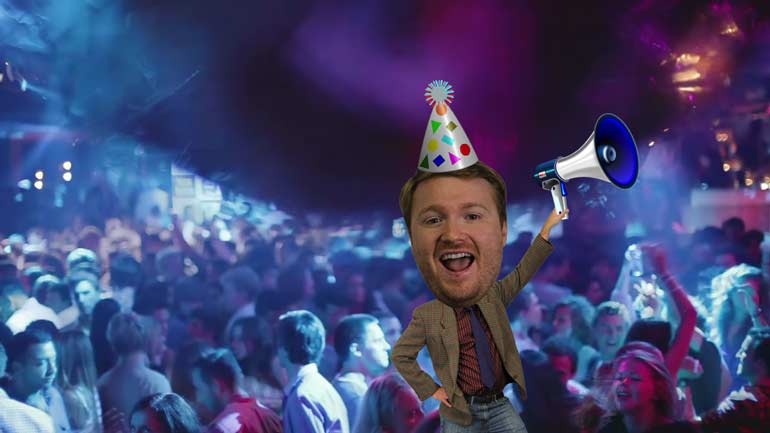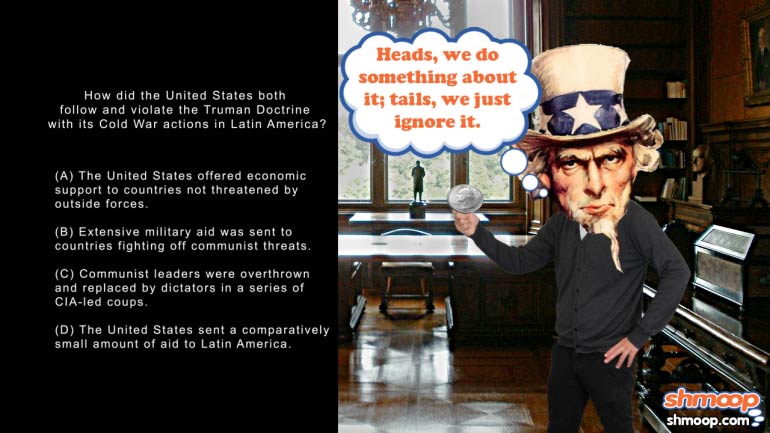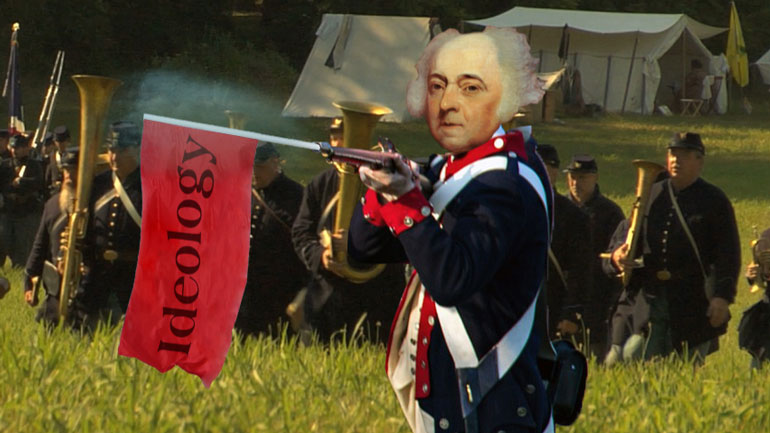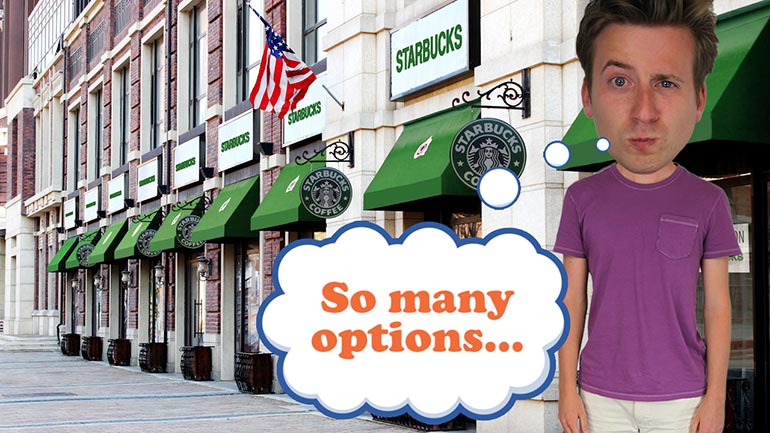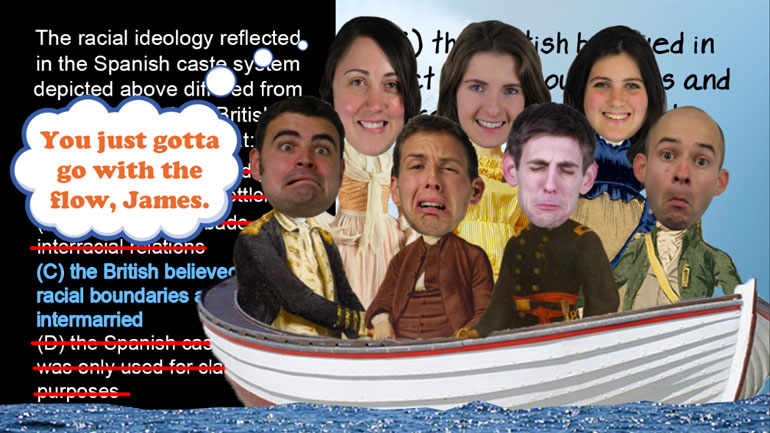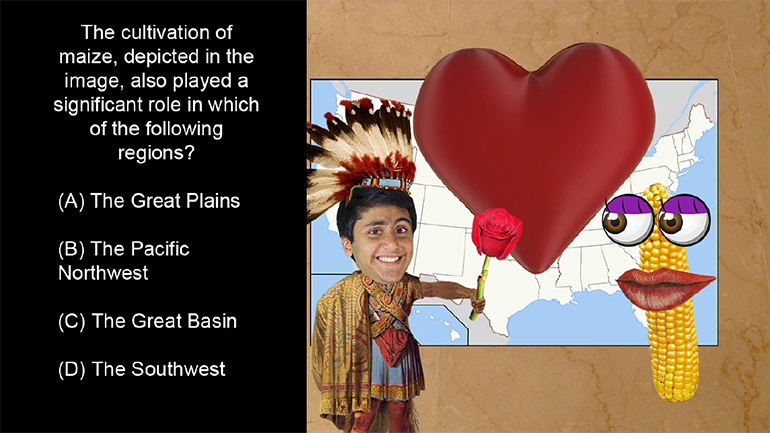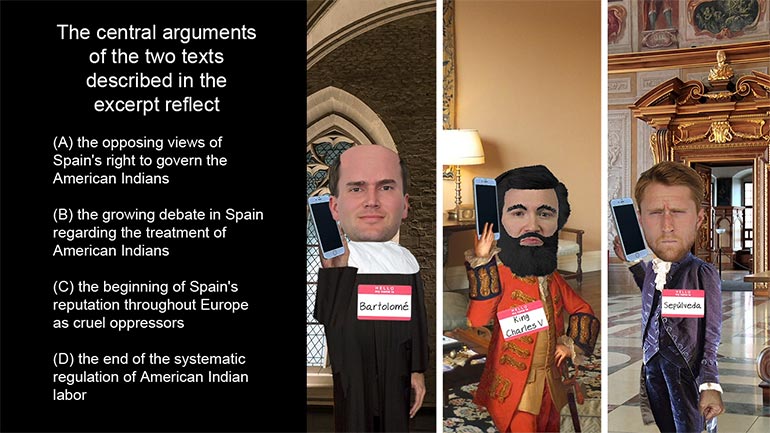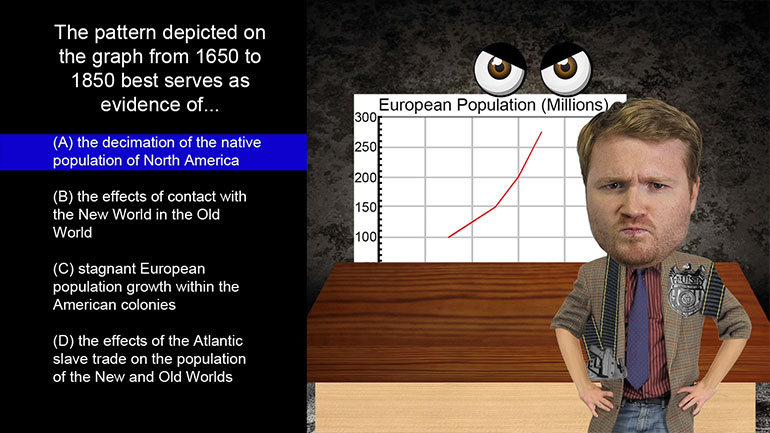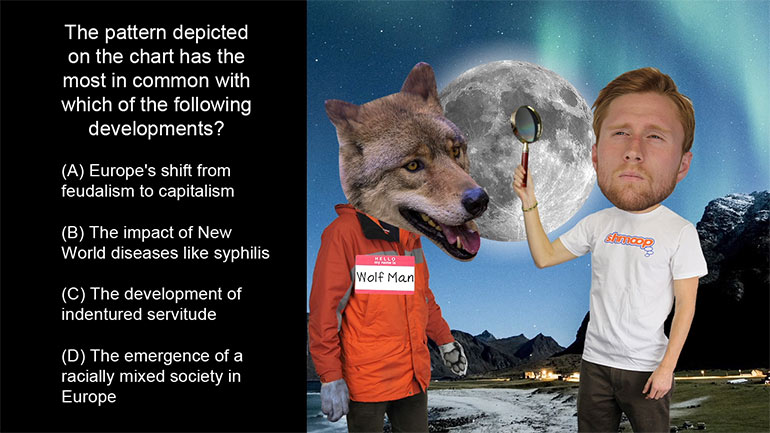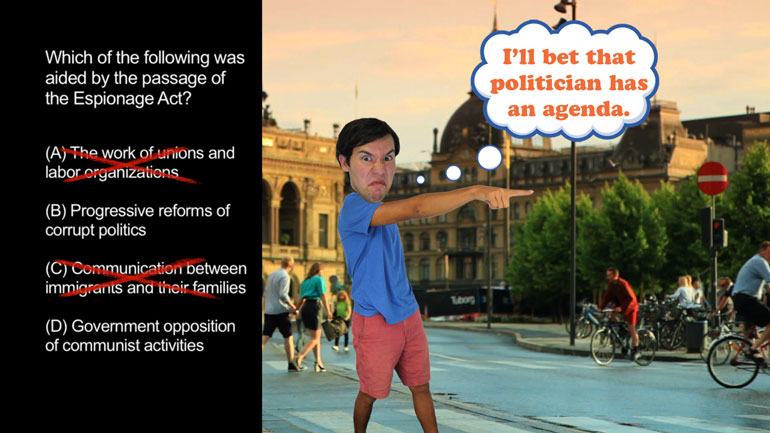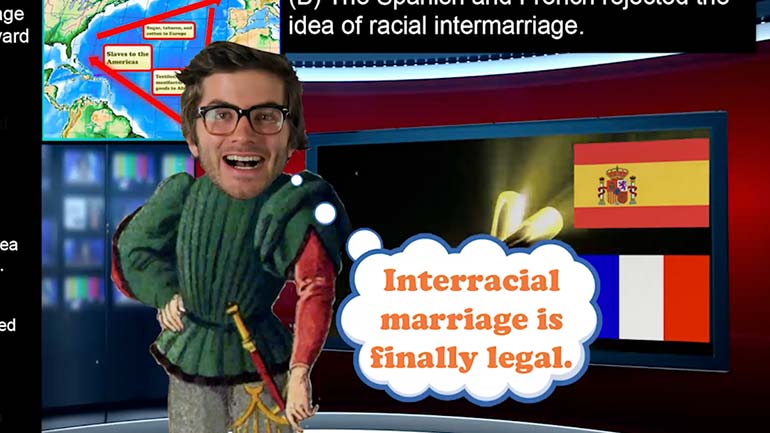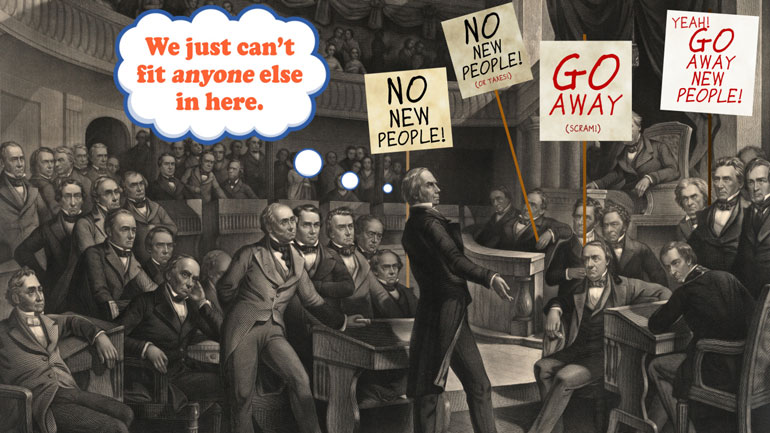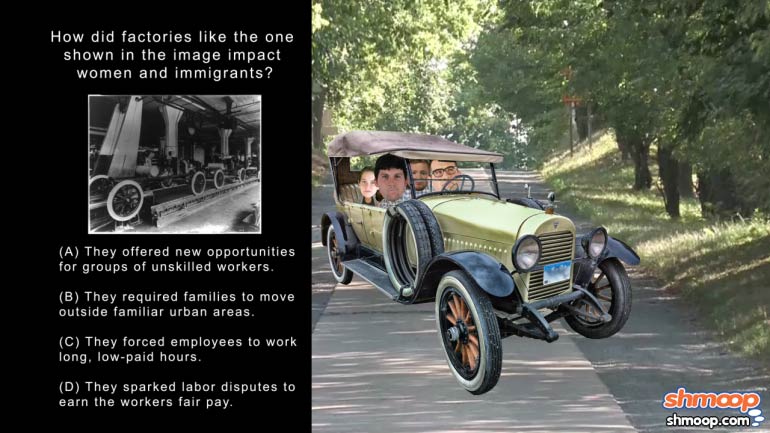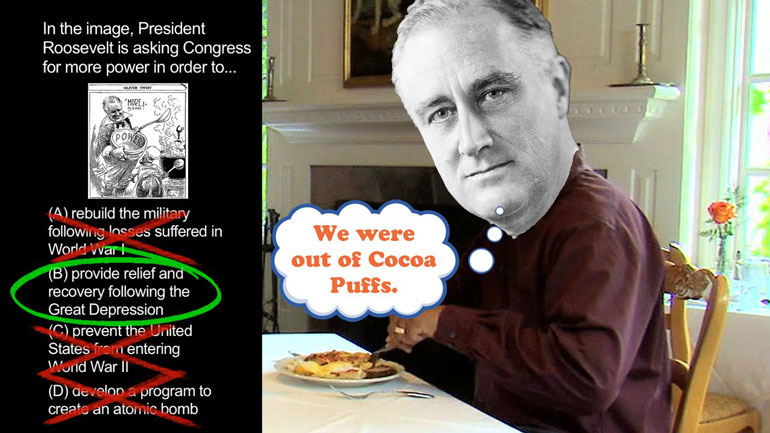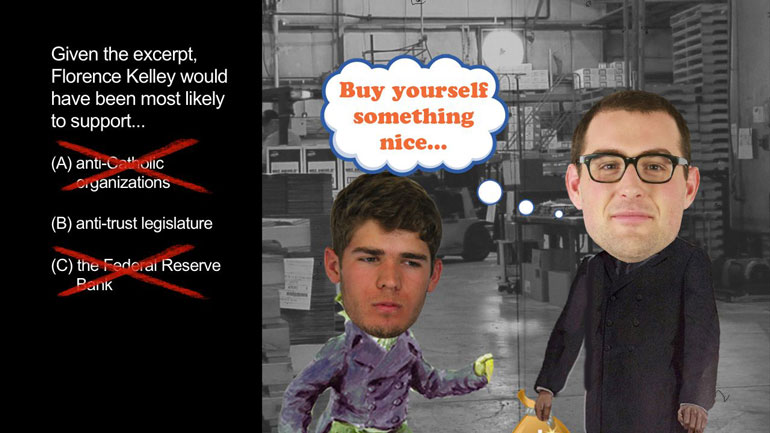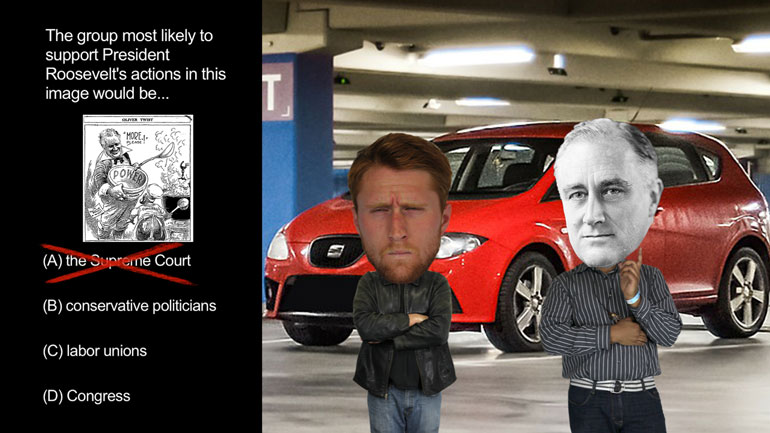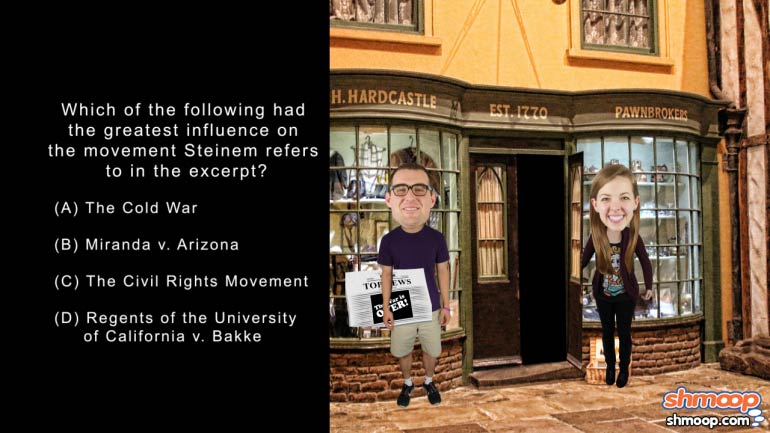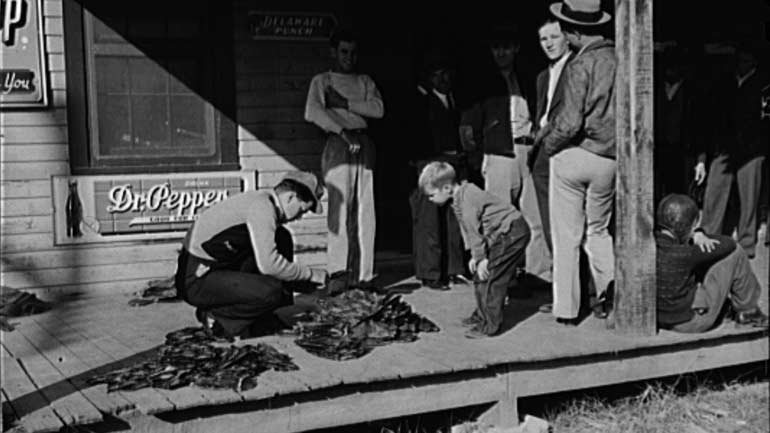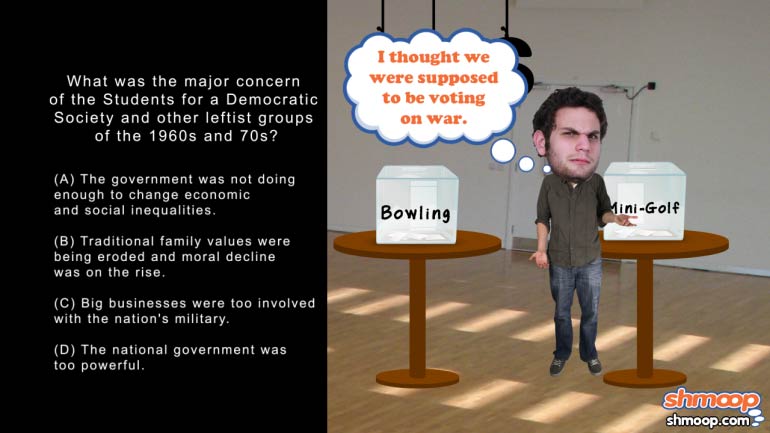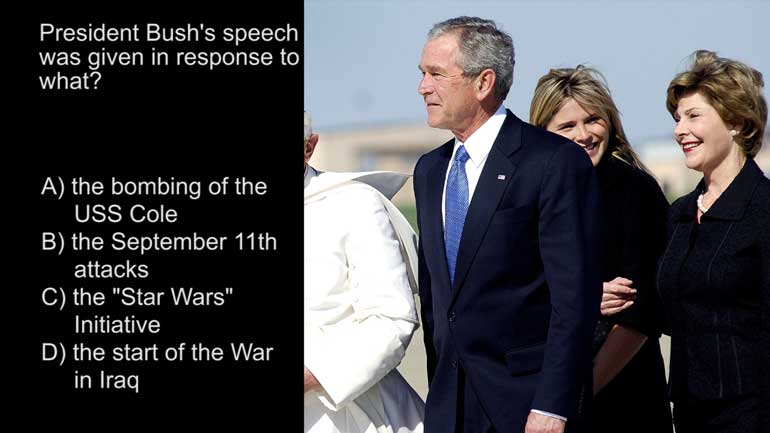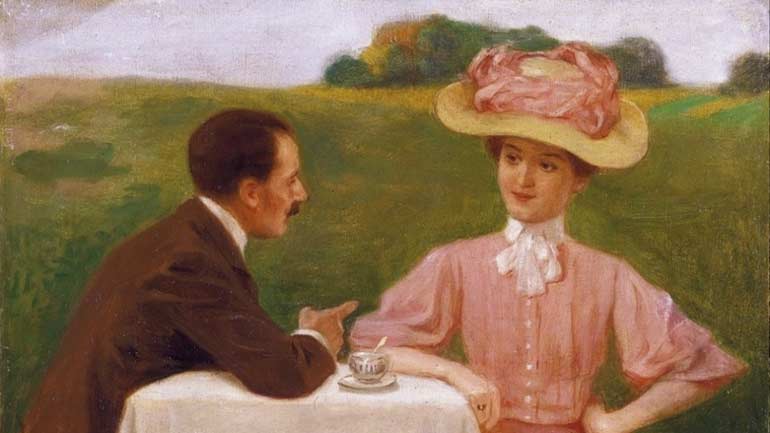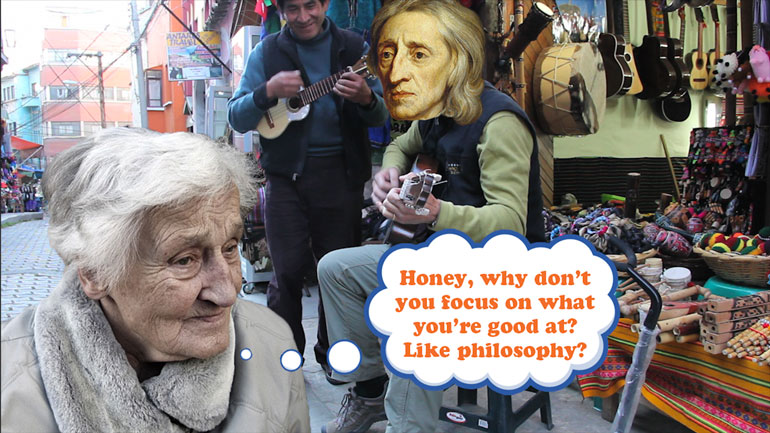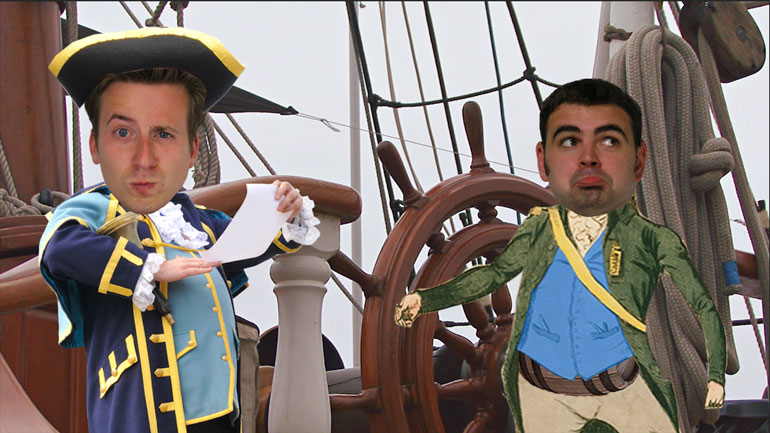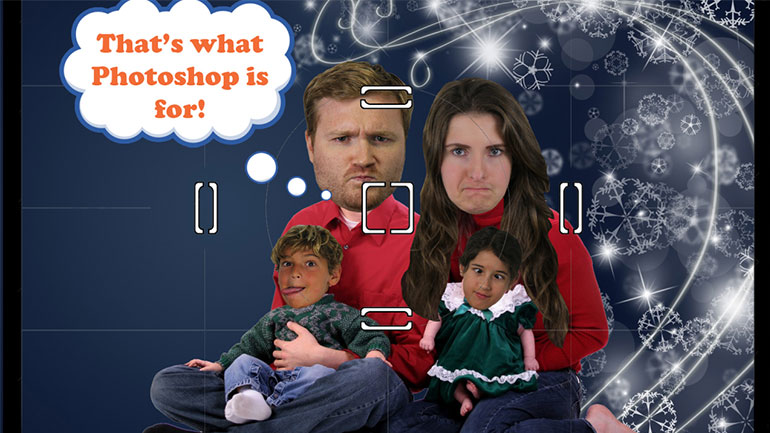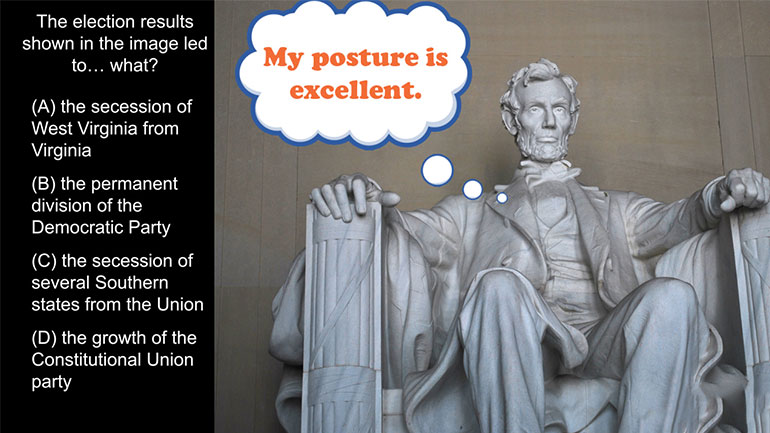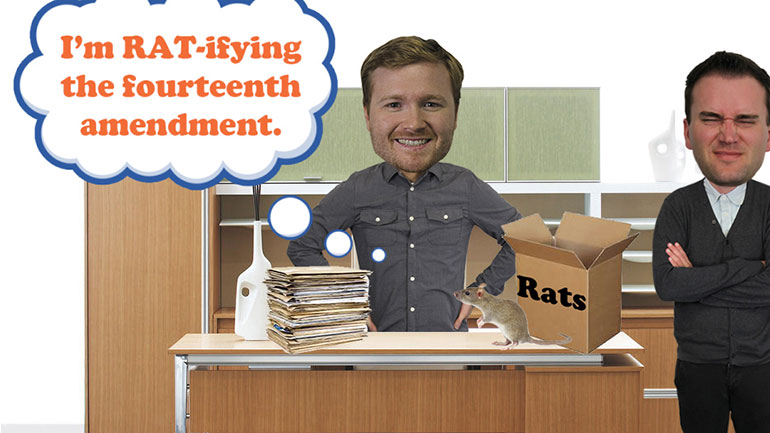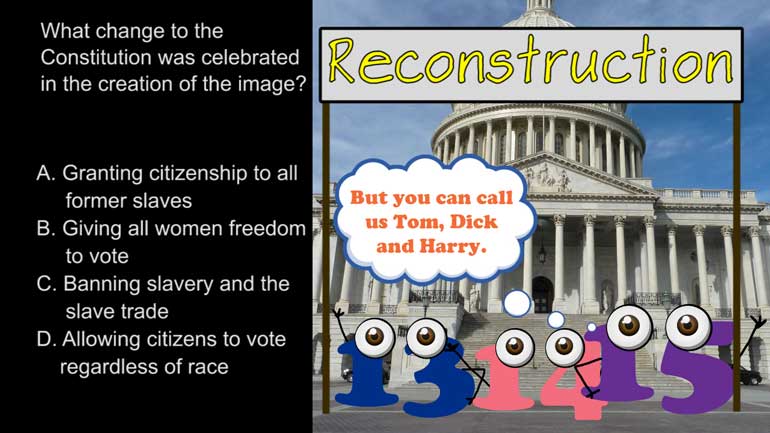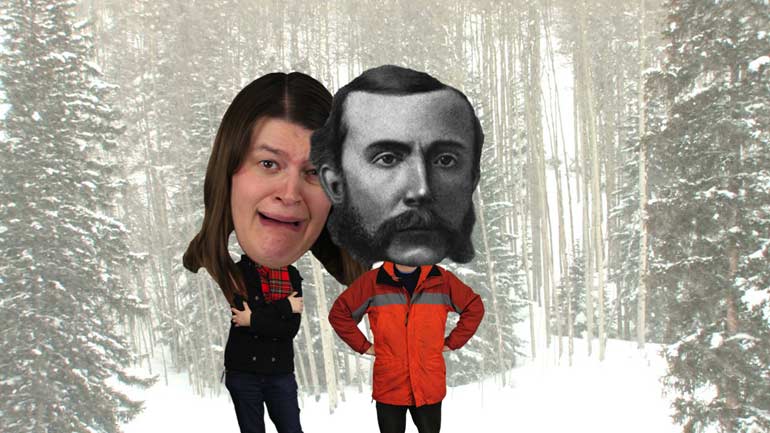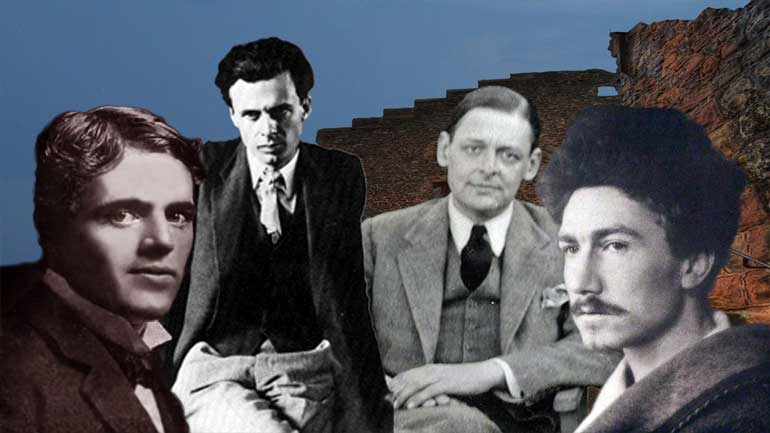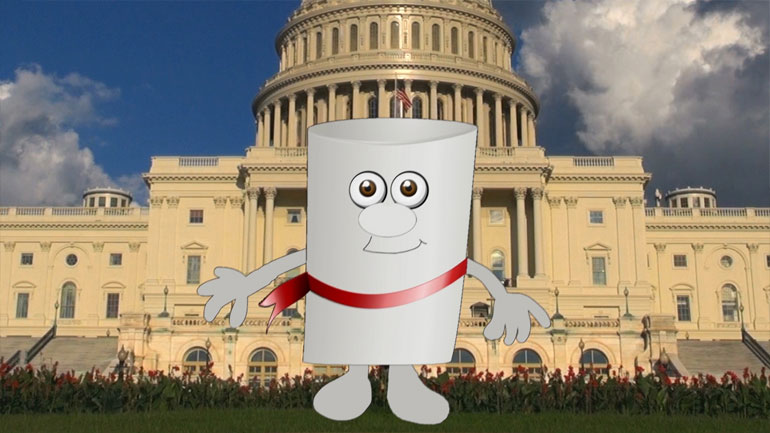ShmoopTube
Where Monty Python meets your 10th grade teacher.
Search Thousands of Shmoop Videos
Test Prep Videos 641 videos
AP U.S. History Exam 2.45. The journey shown on the map was an example of...what?
AP U.S. History Exam 2.26. This speech reinforced a shift in the focus of the war that Lincoln established by...what?
What did the Spanish messengers bring with them to North America? Hint: you probably wouldn't be thrilled to get this for your next birthday.
AP U.S. History Exam 1.32 183 Views
Share It!
Description:
Take a look at this sweet question about Equal rights. ...Oh. It's not about the sweetener? Gotcha. Check it out anyway and see if you can find out which amendment was addressed in the Plessy v. Ferguson case.
Transcript
- 00:00
[ musical flourish ]
- 00:03
And here's your Shmoop du jour, brought to you by equal protection,
- 00:07
Sweet N Low's least favorite part of the Sugar Act.
- 00:10
All right, here's the excerpt.
- 00:11
[ mumbles ]
Full Transcript
- 00:17
All right, and the question:
- 00:18
Which Constitutional amendment was addressed in
- 00:21
the Plessy v. Ferguson case?
- 00:23
And here are your potential answers.
- 00:27
Supreme court cases like Plessy v. Ferguson showed that
- 00:30
even after a civil war and changes to the Constitution,
- 00:33
African Americans still had a long way to go for some
- 00:36
not-so-separate equality.
- 00:38
Well, in Plessy v. Ferguson, were lawyers arguing
- 00:41
over rights outlined in A - the First Amendment?
- 00:44
Well, Homer Plessy claimed that his rights were
- 00:46
violated when a conductor asked him to sit in a segregated
- 00:49
railroad car. But the First Amendment?
- 00:52
Well, that guarantees freedom of religion, speech,
- 00:54
press, assembly, and petition.
- 00:57
And while we're on the Bill of Rights, the Fifth Amendment
- 00:59
guarantees the right to due process of law.
- 01:02
Well, in this case, all of these rights are wrong.
- 01:05
Did Plessy v. Ferguson concern a possible violation of
- 01:08
D - the Fifteenth Amendment?
- 01:10
Well, the Fifteenth Amendment prohibits the federal government
- 01:13
from denying a citizen the right to vote
- 01:15
based on race. So that prohibits D, as well.
- 01:17
Which means that the Plessy v. Ferguson case addressed
- 01:20
C - the Fourteenth Amendment.
- 01:22
Well, the Fourteenth Amendment not only guaranteed citizenship for slaves,
- 01:25
it also afforded them equal protection under the law.
- 01:28
Plessy's lawyers argued that being forced to sit
- 01:30
in a separate railroad car violated Plessy's right to that
- 01:34
equal protection.
- 01:35
The Supreme Court, however, disagreed, claiming that so long
- 01:38
as the cars were separate but equal,
- 01:40
everything was hunky dory. So C is the correct answer.
- 01:43
Sixty years later, Plessy v. Ferguson was overturned
- 01:46
by Brown v. Board of Education, which
- 01:48
schooled the country on just how unequal that
- 01:51
"separate but equal" business really was.
- 01:55
[ children giggling ]
Related Videos
Ever heard of a "living document"? They eat and breathe just like the rest of us! They even walk around on their own two legs. Okay, fine—maybe t...
If the Puritans had gotten their way, religion would play a much larger role in lawmaking these days. Want to know more? Watch the video for all th...
What happened between the creation of the Articles of Confederation and the ratification of the current U.S. Constitution? This video analyzes the...
The Modernists thought the world had a lot of problems, and they were intent on fixing them—or at least talking about fixing them. Unfortunately,...
This video explains Federalism and the quest for a fair balance between state and national power. It covers the progression and compromises of Fede...

